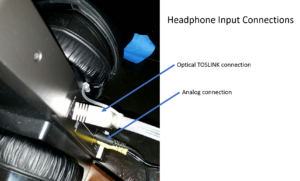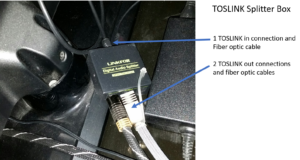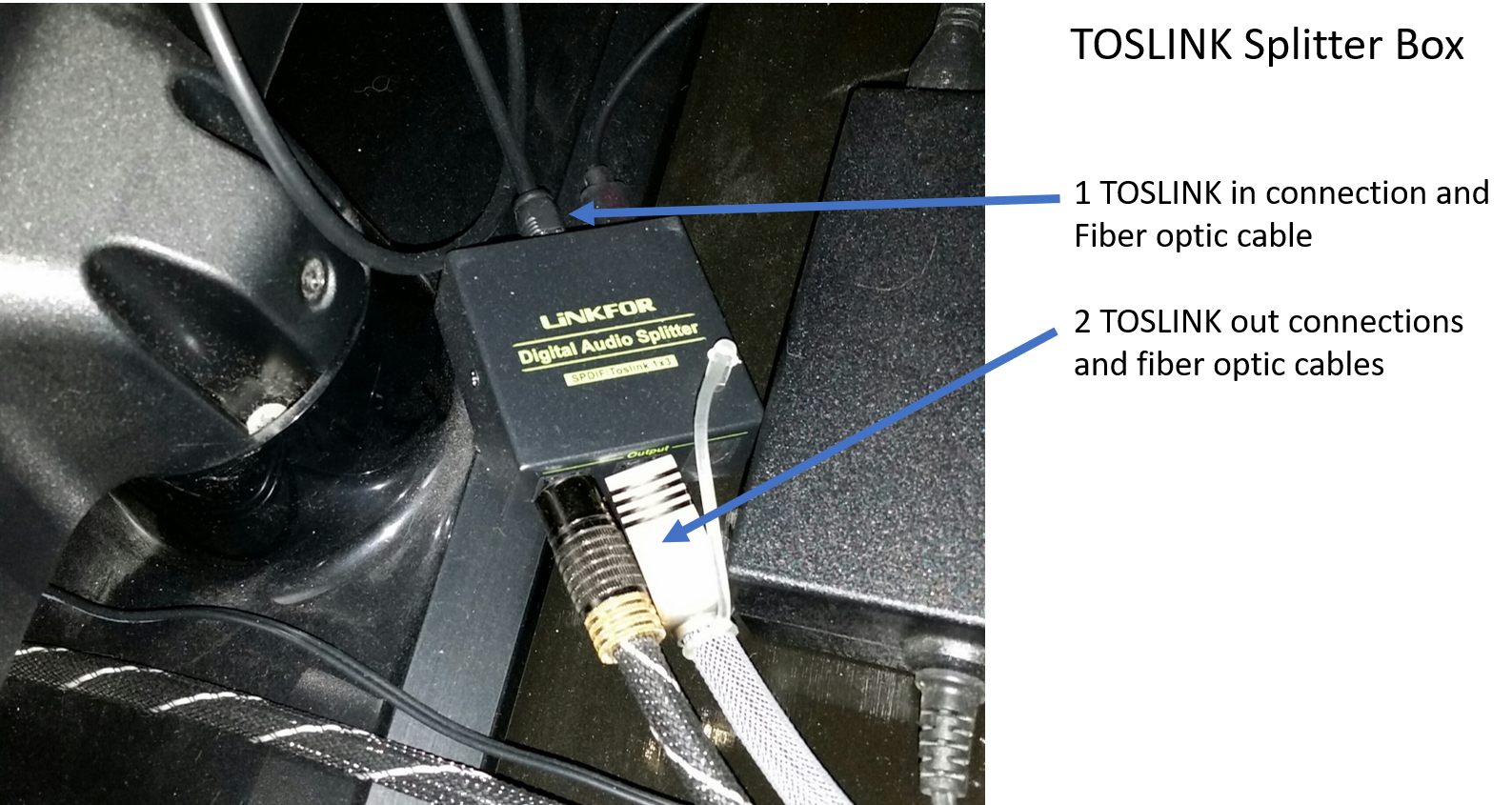This is a technical post which may be helpful for someone. I haven’t posted much technical information in some time, so this is more-or-less getting back to the beginning here.
I had occasion to purchase a very good wireless headphone system recently. Not one of those Bluetooth units. This was a radio frequency (RF) system. Bluetooth has a range of 10 meters, about 33 feet, and this RF setup has a range approaching 300 feet. In both instances, those specifications are “bean field clear” with no obstructions. Walls, trees, wolverines, etc., will very often reduce range.
The reviews for the headphone system are generally very good. However, a couple of reviews were peculiar. Typically, they said something along the lines of, “I couldn’t get the headphones to connect to my XYZ television, so I took them back.”
Don’t you just “plug ‘em in”? What is going on here?
The headphones will accept two input sources. One is a standard analog headphone jack, the other is optical. The optical is TOSLINK.
The point here is not to get too nerdy technical, so let me just say that TOSLINK uses a fiber optic cable. It is digital, and many different devices use it. In my case, my stereo integrated amplifier, set top box, Blue Ray DVD player, the TV, and the sound bar all are TOSLINK capable.
I had planned to connect the headphones to the set top box TOSLINK and the amp’s analog headphone jack. Unfortunately, and much to my surprise, the headphones did not work when connected to the set top box (STB).
Again, I ask, ”What is going on here?”
The obvious test was to connect the headphones to one of the other TOSLINK connections on another piece of equipment. That is exactly what I did, and in an instant the headphones worked perfectly. My best guess was that there was something about the STB TOSLINK.
I was mostly correct. It is not the TOSLINK connection itself, but rather the signal that is transmitted over the TOSLINK fiber optic cable. The headphones understand a type of signal called PCM.
PCM stands for “Pulse Code Modulation” and it is a signal standard that goes back to just about forever. We all use PCM, but few of us know it. I first heard about PCM when I discovered that my Betamax VCR had a PCM had a connector that used it. I recall that later I purchased an electronic keyboard that had PCM-out. Apparently, this signal is used in computers, telephones, CDs, and a lot more.
If PCM is so common, why did the headphones not work when hooked up to the STB?
It turns out that there are two PCM standards. Perhaps there are more than two, but in my research I found mention of only two. The “other” standard is called “linear pulse code modulation”, or LPCM.
If you are interested in the gory details, you can look it all up and become immersed in the nitty-gritty.

LCPM is used by game consoles. I found references to the reasoning behind using LPCM with games as opposed to PCM or HDMI, but the thinking behind the choice is beyond the scope of this post. Suffice it to say, that’s the way it is.
It turns out that the STB TOSLINK output is LPCM. Deep down in the set top box manual are instructions of changing the optical output signal, but those changes do not work for this application. My STB cannot be switched to PCM output.
I can see now that a couple of those odd reviews began to make sense. It is likely that the writers’ TV’s had the incorrect signal output.
There was a simple/not-so-simple solution to my problem. All I had to do was to connect the headphones to the TOSLINK output on the TV. That signal was plain-old-everyday PCM. The not-so-simple part of the solution was how to make the connection. The soundbar was already connected to the TV by the TOSLINK!

I figure that there’s a device for everything, and sure enough, a quick online search turned up a great selection of TOSLINK splitters. I purchased a little box with one optical input and three outputs. That allowed me to connect both the headphones and the soundbar to the TV, with one output leftover for future expansion.
So, how does it all work? Excellent, and I mean it. Not only do I have excellent sound with the new headphones, but I now know waaaaay too much about PCM.
